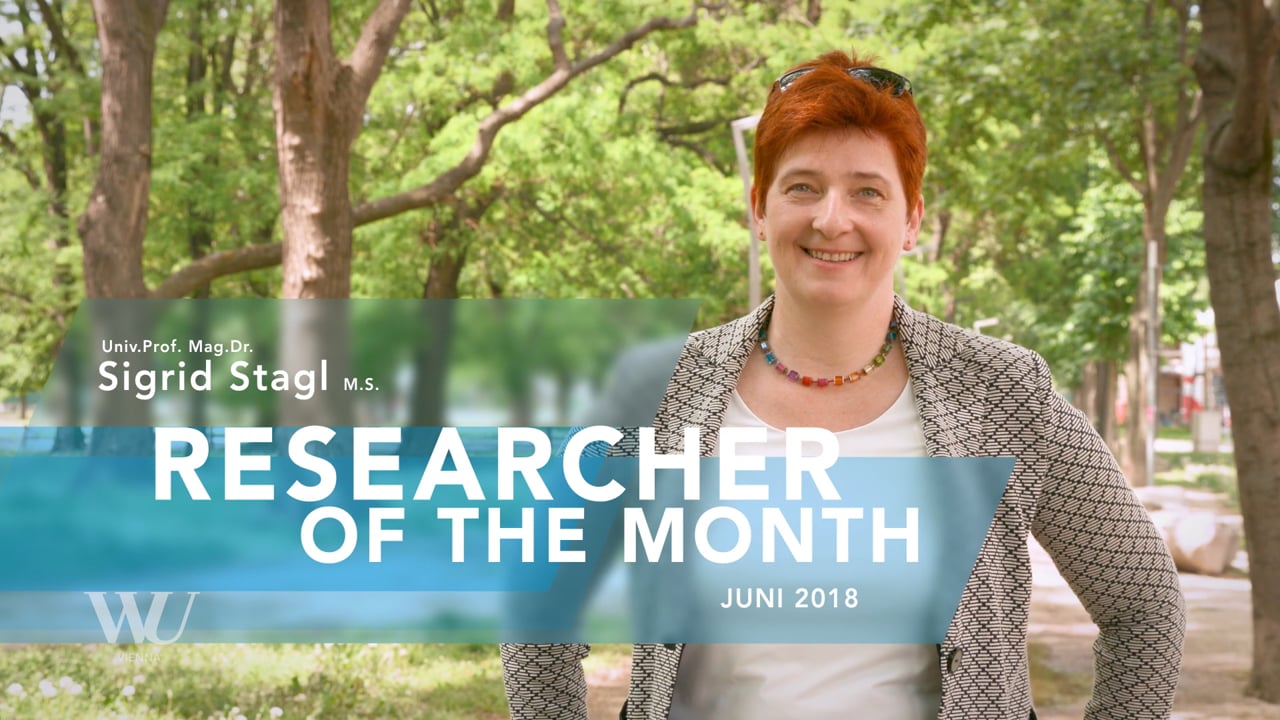Sigrid Stagl

Sigrid Stagl
Researcher of the Month
No matter if it’s in the manufacturing and service sector, politics, or our private lives: Sustainability is regarded as a key to the future of our planet, but the concept often tends to be oversimplified. Many mistakes are being made, especially in the field of climate protection, where we’re still a far cry from meeting the 2°C target envisioned at the Paris climate summit. WU Professor Sigrid Stagl, head of WU’s Institute for Ecological Economics, is working on methods that make it possible to measure the true costs of services, products, and economic policy decisions.
Many products appear to be cheap, even though they really aren’t: The costs of these products are often shifted from consumers to other people, in the form of cheap labor, bad working conditions, and environmental impact. This can have dire consequences, especially when it comes to climate protection. “It’s obvious that economic success depends on the use of natural resources,” explains WU Professor Sigrid Stagl. “This means that on a planet with limited resources, the principle of regeneration must be a top economic priority. We only know the true costs of economic policy decisions, production chains, and services if we adopt a comprehensive perspective that takes into account the whole lifecycle.” At WU’s Institute for Ecological Economics, Sigrid Stagl is working on methods intended to support decision-making processes and models that make it possible to assess how high of a price society actually has to pay for different economic policy decisions.
New methods for better decision-making
“Conventional cost-benefit analysis paints an oversimplified picture of social costs and has therefore proven inadequate. Previously, all impacts used to be measured in monetary units. As a consequence, impacts that are difficult or even impossible to quantify in monetary terms were disregarded,” Sigrid Stagl explains. “Environmental degradation or the loss of biodiversity cannot be measured in money alone – a sustainable economy requires an integrated perspective. If we don’t adopt such a perspective, we won’t meet our 2°C climate protection target.” To better compare and evaluate different decisions and scenarios, Stagl and her team used a mathematical algorithm developed in the field of ecological economics. The result is a method of participatory multi-criteria analysis suitable for an extended range of new uses. With regard to climate protection, for example, this new approach makes it possible to quantify the impacts of economic activities based on the same units in which they occur: CO2 emissions in tons, animal and plant species based on the relevant ecological indicators, etc. In an additional step, the results of the quantitative analyses are complemented by stakeholder and citizen engagement processes in order to increase the democratic legitimacy of the decision-making procedure. “In this way, we are able to take into account the interests of all stakeholders and the community as a whole. As an end result, this process gives us a robust, prioritized list of plausible scenarios and the corresponding solutions, ranked by their degree of social desirability,” says Sigrid Stagl.
A step towards meeting our climate targets
For the first time, multi-criteria analysis now allows researchers to develop comprehensive scenarios for the future that ideally take into account all relevant criteria, and to rank these scenarios based on how desirable they are to society, taking into consideration the interests of citizens and stakeholders. This is a crucial contribution to the debate about which steps we have to take to meet our climate targets. “We can now for the first time use these methods to make comprehensive, sustainable decisions. Our analyses of energy-related scenarios on the national and regional levels have shown that approaches which combine demand- and supply-side measures get the best results, that decarbonization and sustainable energy mixes can be achieved, that quick and determined action pays off, and that it is possible to reconcile social and environmental objectives,” Sigrid Stagl points out.
